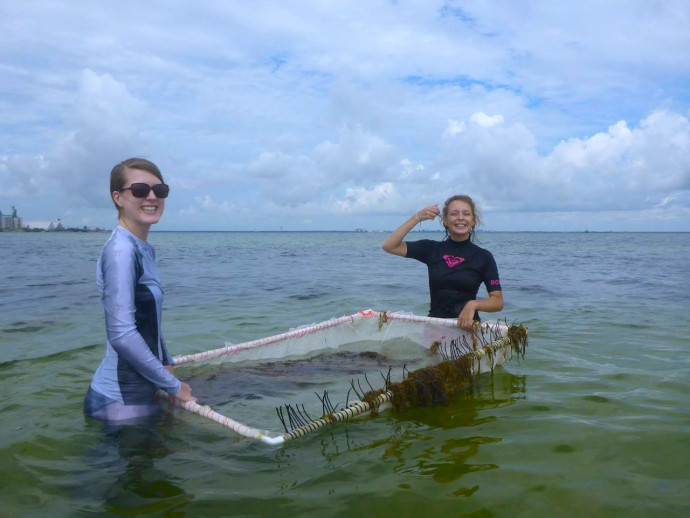Research
Published 10 January 2025The secret lives of pregnant male pipefish

A new University of Canterbury study reveals surprising differences in pipefish, where males carry the young, defying evolutionary norms
In a discovery that flips mating rules on its head, Te Whare Wānanga o Waitaha | University of Canterbury (UC) PhD student Nicole Tosto has uncovered biological differences between male and female pipefish that shape their survival.
“Pipefish are unique because they don’t follow the usual ‘rules’ of evolution,” Tosto explains. “In most species, males compete to attract females. But with pipefish, the males carry and protect the embryos.”
Male pipefish activate genes to strengthen their immune systems, a key adaptation for carrying and nurturing their young. Meanwhile, females activate genes that support egg production.
The study also challenges traditional ideas about mate selection. Unlike many species where females choose larger, dominant males, female pipefish prefer smaller males with higher fitness levels. Tosto believes this preference reflects a focus on efficiency: smaller males may need fewer resources or be better suited for the species’ unique courtship rituals, which include synchronised movements in the water.
It also happened that males and females within the species of pipefish studied looked almost identical – a characteristic known as monomorphism. In many species, visible traits like size or colour help distinguish sexes, but this species of pipefish lacked those differences.
Instead, their distinctions lie beneath the surface. Unlike humans, pipefish don’t have sex chromosomes. Both sexes share the same genetic “blueprint” but use their genes differently. Males produce immune-boosting proteins for pregnancy, while females focus on egg-enhancing proteins.
Understanding how species like pipefish adapt to unique mating and survival pressures is critical for broader conservation efforts. “Knowing how these pressures shape mating systems helps us better understand how species survive and adapt to their environments,” Tosto says.
Her doctoral supervisor, Biological Sciences senior lecturer Dr Sarah Flanagan notes, “Nicole’s research has brought up important questions for evolutionary biologists when it comes to current vs past selection.”
“For example, whether the existence of sex-specific ornamentation is evidence that selection is currently acting strongly on those sex-specific traits or whether ornaments are evidence of selection having happened in the past.”
Tosto’s research sheds new light on the hidden complexities of evolution and offers valuable insights into the survival strategies of one of nature’s most unconventional species.
Additional information: University of Canterbury press release:
Additional information: Paper in Molecular Ecology: "Sexual Selection on Non-Ornamental Traits Is Underpinned by Evidence of Genetic Constraints on Sex-Biased Expression in Dusky Pipefish"
RESEARCHER
Dr Sarah Flanagan
ORGANISATION
Te Whare Wānanga o Waitaha | University of Canterbury
FUNDING SUPPORT
Marsden Fund Fast-Start "Does sexual selection drive the evolution of sex-biased gene expression?"
CONTRACT OR PROJECT ID
MFP-UOC1904
